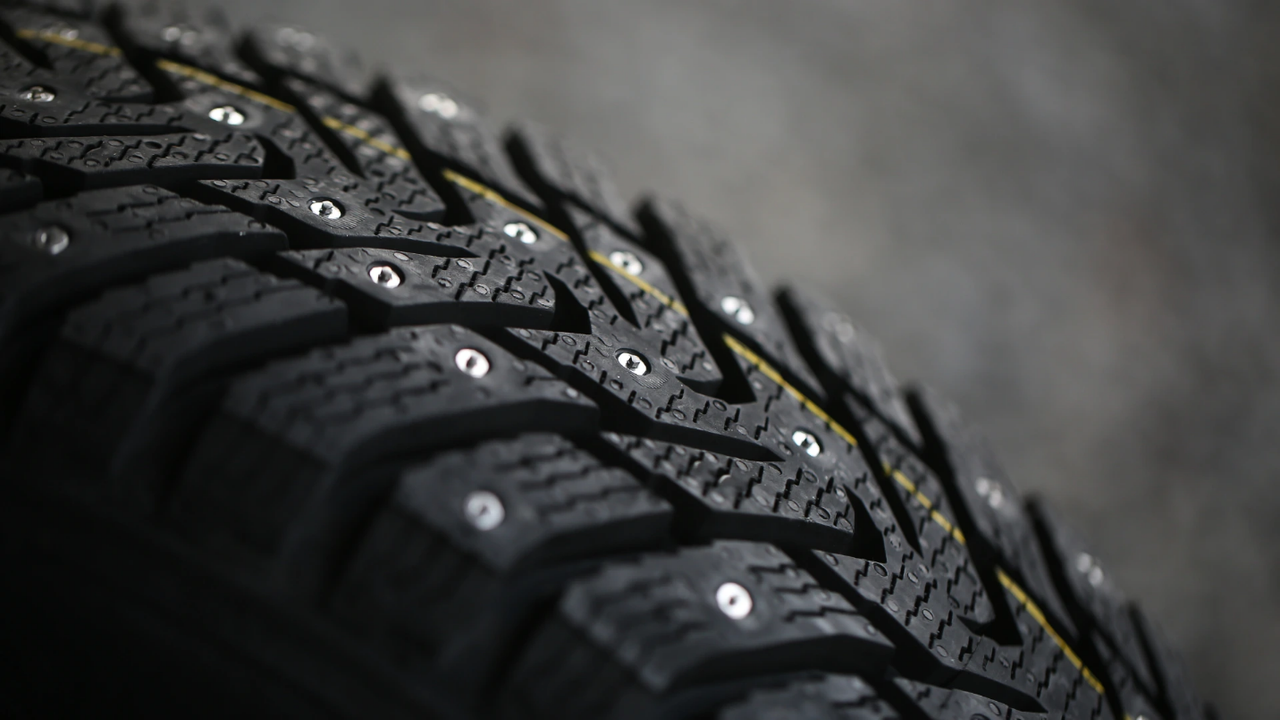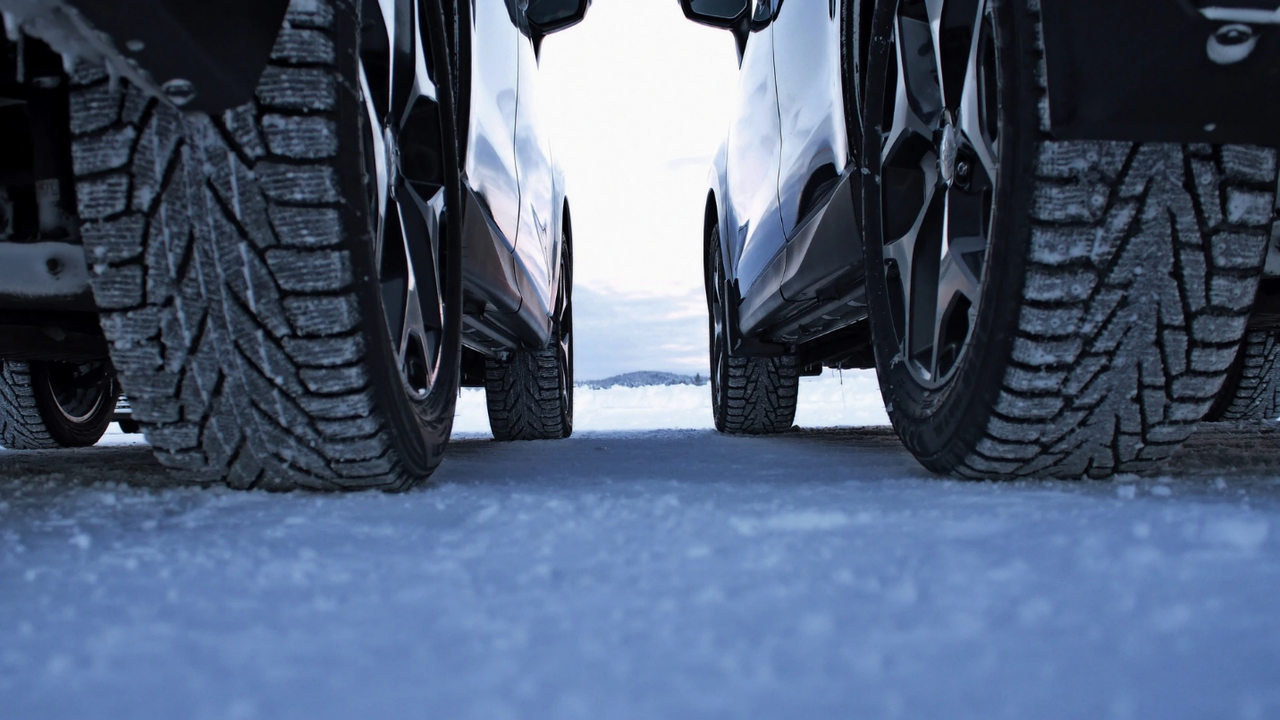When winter hits, your tires become more important than ever. Whether you're dealing with icy roads, snow, or slush, the type of tire you choose can make a huge difference in your vehicle’s performance and safety. One of the most common debates among drivers is whether to go with studded or non-studded winter tires. Whether you're looking to buy tire online or you want to buy tire in Southern California, it's essential to know the pros and cons of both options to make the best decision for your driving conditions.

What Are Studded Winter Tires?
Studded winter tires are designed with metal studs embedded in the tread. These studs provide extra traction on icy roads, allowing the tire to grip the surface more effectively than non-studded tires. The studs are typically made of steel and are inserted into the rubber of the tire, giving it a unique, rough texture.
Benefits of Studded Tires:
-
Superior Traction on Ice: The most significant advantage of studded tires is their ability to grip icy surfaces. The metal studs dig into the ice, providing better stability and reducing the chances of slipping.
-
Better Control in Severe Winter Conditions: Studded tires are ideal for regions with consistent ice or heavy snow. If you live in an area with harsh winters, studded tires offer an extra layer of safety.
According to Tire Rack (Tire Rack - Studded vs Non-Studded Tires), “Studded tires are particularly effective on ice-covered roads, where the metal studs can grip the surface more effectively than the rubber tread alone.”
Drawbacks of Studded Tires:
-
Noise: One downside of studded tires is the noise they produce on dry or wet pavement. As the studs make contact with the road, they can create a loud, abrasive sound, which can be annoying for drivers.
-
Road Damage: The studs, while excellent for traction on ice, can cause damage to paved roads. This is why many states have restrictions on when studded tires can be used.
-
Limited Use: Studded tires are most effective in icy conditions but don’t perform as well on dry or wet roads. They may not be the best choice if you live in an area with only occasional snow or ice.
What Are Non-Studded Winter Tires?
Non-studded winter tires, also known as studless tires, rely solely on their tread design and rubber composition to provide traction in winter conditions. Instead of metal studs, these tires are made from specially formulated rubber compounds that stay flexible in cold temperatures and feature aggressive tread patterns designed to grip snow and ice.
Benefits of Non-Studded Tires:
-
Quieter Ride: One of the biggest advantages of non-studded winter tires is that they provide a much quieter ride compared to their studded counterparts. Since there are no metal studs grinding against the pavement, the noise level is significantly reduced.
-
Better for Dry and Wet Roads: Non-studded winter tires are designed to perform well on both dry and wet surfaces, making them a versatile option if you're in an area where snow or ice is less frequent.
-
No Road Damage: Non-studded tires are much gentler on the roads. Without metal studs, they won’t cause damage to paved surfaces, making them a better choice in places with strict road protection laws.
However, non-studded tires are not without their drawbacks. They are typically less effective on sheer ice compared to studded tires. The rubber compounds and tread patterns are excellent at gripping snow and slush, but they don't dig into ice the way metal studs do.
How to Choose Between Studded and Non-Studded Winter Tires
When deciding between studded and non-studded winter tires, several factors should influence your decision, including the typical winter conditions in your area, road conditions, and personal driving preferences.
1. Climate and Road Conditions
The most critical factor in choosing between studded and non-studded tires is the climate and road conditions you typically drive in during the winter months.
-
For Icy Roads and Extreme Winter Conditions: If you live in a region where ice is a constant threat, such as in northern parts of the United States or areas with extended cold periods, studded tires are your best bet. Their superior traction on ice-covered roads will provide better stability and safety, especially during winter storms.
-
For Snowy and Slushy Roads: If your area sees a lot of snow but not necessarily icy conditions, non-studded tires are often the better choice. These tires are designed to handle deep snow and slush, offering excellent grip while maintaining comfort and noise reduction.
-
For Milder Winters: If you’re in a region with occasional snow but mostly wet or dry roads, non-studded tires may be the most practical option. These tires perform well in a variety of conditions, including rain, and they offer a quieter ride and better fuel efficiency.

2. Driving Habits and Preferences
Your driving habits and preferences also play a role in deciding which tire is best for you. If you drive frequently on highways or long-distance trips, you may prefer non-studded tires because they provide a smoother, quieter ride. However, if you frequently travel on back roads or through heavily iced areas, the added traction of studded tires may be worth the extra noise and potential road damage.
3. Regulations and Restrictions
In some regions, there are laws governing the use of studded tires. Some states and countries only allow studded tires during specific months of the year to minimize road damage. Before making your purchase, be sure to check the tire regulations in your area. According to AAA (AAA - Tire Safety), "Some states limit the use of studded tires due to the damage they cause to road surfaces. It’s important to check your local regulations before choosing studded tires."
Performance Comparison: Studded vs. Non-Studded Tires
To help clarify the differences in performance, here’s a quick comparison of how each type of tire performs in various conditions:
|
Condition
|
Studded Tires
|
Non-Studded Tires
|
|
Icy Roads
|
Excellent traction
|
Moderate traction
|
|
Snowy Roads
|
Good traction
|
Excellent traction
|
|
Wet Roads
|
Moderate traction
|
Excellent traction
|
|
Dry Roads
|
Poor traction
|
Excellent traction
|
|
Noise Level
|
High
|
Low
|
|
Road Wear
|
Can cause damage
|
No damage
|
|
Cost
|
Higher
|
Lower
|
Cost Considerations
Cost is another essential factor to consider. Studded tires tend to be more expensive than non-studded tires due to the additional manufacturing process and the materials used. Additionally, if you live in an area with regulations that limit when you can use studded tires, you may need to invest in two sets of tires: one for winter conditions and one for other seasons.
While non-studded tires may cost less upfront, they still offer great value, especially in milder climates or for those who don’t want the added noise of studded tires. Keep in mind that proper tire maintenance, such as regular rotations and checking tire pressure, can help extend the life of both studded and non-studded winter tires.
Conclusion: Which Tire Should You Choose?
Choosing between studded and non-studded winter tires ultimately comes down to the type of winter conditions you experience, your personal driving preferences, and the regulations in your area.
-
Go with studded tires if you live in an area with frequent icy roads, long winters, and severe winter weather conditions. Their superior traction on ice and snow will provide extra security during those icy months.
-
Opt for non-studded tires if you experience milder winter conditions with occasional snow and ice. Non-studded tires are quieter, more versatile, and perform well on both wet and dry roads, making them a better option for areas with fluctuating weather patterns.
No matter your choice, you’ll want to make sure that you’re purchasing your tires from a trusted source. When you’re ready to make the right decision, whether you decide to buy tire online or you want to buy tire in Southern California, knowing your options will help you drive safely through the harshest winter conditions.

FAQs
1. What are the main differences between studded and non-studded winter tires?
Studded tires have metal studs embedded in the tread to provide better traction on icy roads. Non-studded tires rely on specialized rubber compounds and tread designs to grip snow and ice, but they don't have the same effectiveness on ice as studded tires.
2. Can I use studded tires year-round?
In some regions, it is illegal to use studded tires during certain months of the year due to road damage concerns. Be sure to check your local regulations regarding the use of studded tires.
3. Do studded tires make a lot of noise?
Yes, studded tires can create significant road noise, especially on dry or wet pavement. Non-studded tires are much quieter, making them a better option for those who prioritize comfort during their winter drives.
4. Which type of winter tire is better for snowy roads?
Non-studded tires are typically better for snowy conditions, as they provide excellent grip on snow without the need for studs. However, studded tires can offer more traction on icy surfaces often found under snow.
5. What is the lifespan of studded tires?
Studded tires generally have a shorter lifespan than non-studded tires because the studs can cause wear on the tread and the road. Proper maintenance and timely replacement are essential to maximize their performance.
6. Are non-studded tires effective in icy conditions?
While non-studded tires perform well on snow and slush, they offer only moderate traction on icy roads compared to studded tires. However, many modern non-studded tires are designed with advanced tread compounds that still provide a good level of grip in mild ice conditions.
7. How do I know if studded tires are legal in my state?
You should check your state’s specific tire laws, as some states have restrictions on when and where you can use studded tires. The AAA website offers helpful information on these laws (AAA Tire Information).
8. How much more expensive are studded tires compared to non-studded ones?
Studded tires are generally more expensive due to the additional materials and the manufacturing process. However, the exact price difference will depend on the tire brand, size, and features.
9. Can I switch between studded and non-studded tires?
Yes, you can switch between studded and non-studded tires as needed, particularly if your area experiences varying winter conditions. Many drivers use non-studded tires in the early winter months and switch to studded tires as conditions worsen.
10. How do I maintain my winter tires?
Regular maintenance is key to extending the life of your winter tires. Ensure that your tires are properly inflated, rotated, and balanced. Additionally, keep an eye on tread depth, as worn tires can reduce your safety on winter roads.

 icons at the top
right corner of the subsection.
icons at the top
right corner of the subsection.